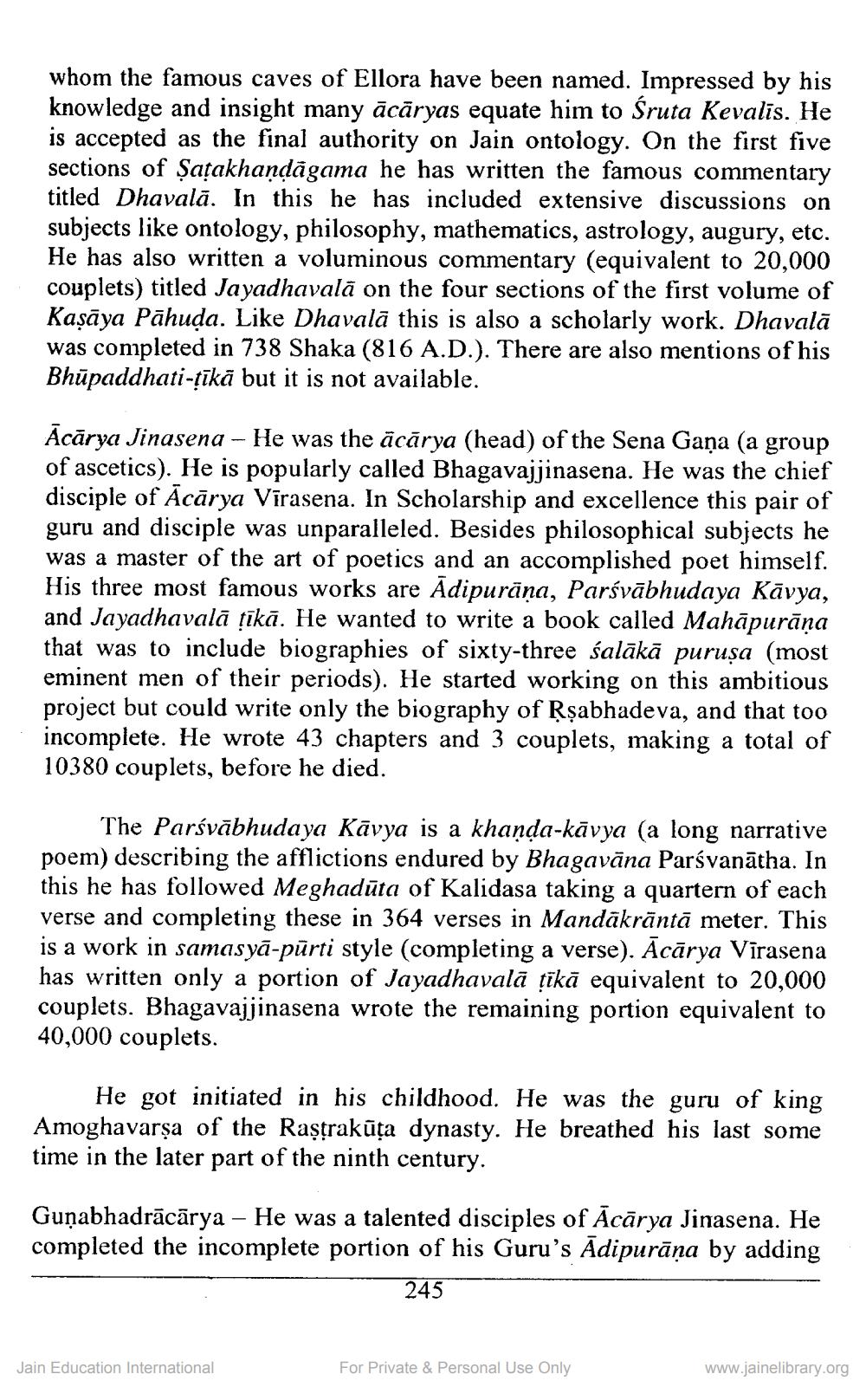________________
whom the famous caves of Ellora have been named. Impressed by his knowledge and insight many ācāryas equate him to Śruta Kevalīs. He is accepted as the final authority on Jain ontology. On the first five sections of Satakhandägama he has written the famous commentary titled Dhavalā. In this he has included extensive discussions on subjects like ontology, philosophy, mathematics, astrology, augury, etc. He has also written a voluminous commentary (equivalent to 20,000 couplets) titled Jayadhavalā on the four sections of the first volume of Kaşāya Pāhuda. Like Dhavalā this is also a scholarly work. Dhavalā was completed in 738 Shaka (816 A.D.). There are also mentions of his Bhūpaddhati-țīkā but it is not available.
Ācārya Jinasena - He was the acārya (head) of the Sena Gaņa (a group of ascetics). He is popularly called Bhagavajjinasena. He was the chief disciple of Acārya Vīrasena. In Scholarship and excellence this pair of guru and disciple was unparalleled. Besides philosophical subjects he was a master of the art of poetics and an accomplished poet himself. His three most famous works are Adipurāņa, Parśvābhudaya Kāvya, and Jayadhavalā tīkā. He wanted to write a book called Mahāpurāņa that was to include biographies of sixty-three salākā purusa (most eminent men of their periods). He started working on this ambitious project but could write only the biography of ķşabhadeva, and that too incomplete. He wrote 43 chapters and 3 couplets, making a total of 10380 couplets, before he died.
The Parśvābhudaya Kāvya is a khanda-kāvya (a long narrative poem) describing the afflictions endured by Bhagavāna Parśvanātha. In this he has followed Meghadūta of Kalidasa taking a quartern of each verse and completing these in 364 verses in Mandākrāntā meter. This is a work in samasyā-pürti style (completing a verse). Acārya Vīrasena has written only a portion of Jayadhavalā tikā equivalent to 20,000 couplets. Bhagavajjinasena wrote the remaining portion equivalent to 40,000 couplets.
He got initiated in his childhood. He was the guru of king Amoghavarşa of the Rastrakūta dynasty. He breathed his last some time in the later part of the ninth century.
Guņabhadrācārya - He was a talented disciples of Ācārya Jinasena. He completed the incomplete portion of his Guru's Adipurāņa by adding
245
Jain Education International
For Private & Personal Use Only
www.jainelibrary.org




